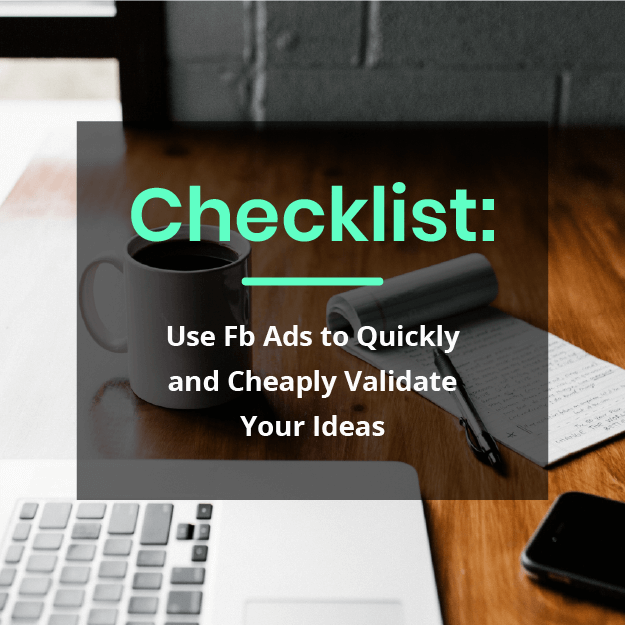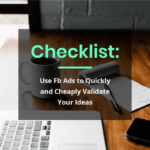Many entrepreneurs fail because they are so convinced of the validity of their passions, creativity, and ideas, that they can’t imagine the marketplace may not be interested in what they have to offer.
It’s wise to validate your service/product/marketing ideas before investing large sums of money and copious amounts of time into them.
Before the rise of digital media, business ideas and marketing concepts were expensive to validate. Print, radio, and television advertising were expensive. Results were more challenging to track. Great investments in graphic design where required.
Today’s entrepreneurs can cheaply test their business ideas with Facebook Ads.
This quick checklist will walk you through the process…
- Determine what question you are trying to answer and what data is needed to answer that question.
- Determine what sort of Facebook Ads results would answer your question satisfactorily.
- Create any needed marketing collateral – landing pages, ad copy, ad images, automated emails, etc.
- Identify audiences likely to be interested in your idea.
- Set up your campaign and launch.
For now, I’m going to focus on steps 1 and 2 because these are the steps not enough people are talking about.
If you don’t know what question you need to ask, you cannot hope to set up an ads campaign that will give you the answers you need… let alone interpret data once your campaign is concluded.
Facebook gives you plenty of data about your ad performance:
- Conversions
- Cost per click
- Social reactions
- Quality Score
- And much, much more…
Social reactions and quality score may give you a good sense of how the emotions and interest your ads generate. Will those emotions and interests convert into sales when you launch? Maybe yes, maybe no.
If your goal is to get a basic sense of market receptivity, then perhaps these indicators are of value to you. Otherwise, you need better data.
Cost per click is somewhat more telling. If your validation campaign fails to produce conversions (leads/registrations/free trials/sales), then clicks may be the best indicator that you have. But again, low cost per click does not prove the viability of your business. It can only serve as evidence for or against an idea.
Be especially wary of choosing ‘Traffic” as your goal in Facebook Ads, because doing so will compel Facebook to give you the highest possible volume of clicks, with little attention paid to the quality of the traffic.
Conversions are ultimately the best indicator of the potential of your business idea.
The problem is this: before your business is ready to launch, you may not have the digital assets you need in order to give people the opportunity to convert!
Suppose you want to start selling a new product, but you are not sure if it will be profitable or not, and you want to validate the idea before ordering 1,000 units. You can’t sell a product that you don’t have. So what do you do?
Or, suppose that you want to launch an expensive service that, by definition, will require a significant investment of time or money to create appropriate digital assets. How do you tell if people will in fact be interested in your $10,000 coaching program?
The answer is to go for the highest quality conversion that you can get on a budget. The most common conversions to use are:
- Facebook Messages (Messenger Ads)
- Form Leads (Lead Ads)
- Subscriptions or signups on a landing page
Facebook Messenger Ads are ads that open up a conversation with your Facebook page when a user clicks on your ad. Messages are often quite cheap and can give you the opportunity to speak with interested prospects in a casual and easy way.
Form Ads are ads that open a contact form within Facebook when clicked upon. It is vital to connect your Facebook lead forms to marketing automation platforms to ensure quick follow-up, and, if relevant, that your sales team is notified of any new leads.
Subscriptions or signups on a landing page are more challenging to use than the above options because they require the user to submit information on a website they have never seen before… and to do so manually (Facebook forms are prefilled with the user’s contact info, and all the lead has to do is click the submit button). On the other hand, the more difficult conversions are to get, the more indication they give you of the desirability of your idea when they occur.







